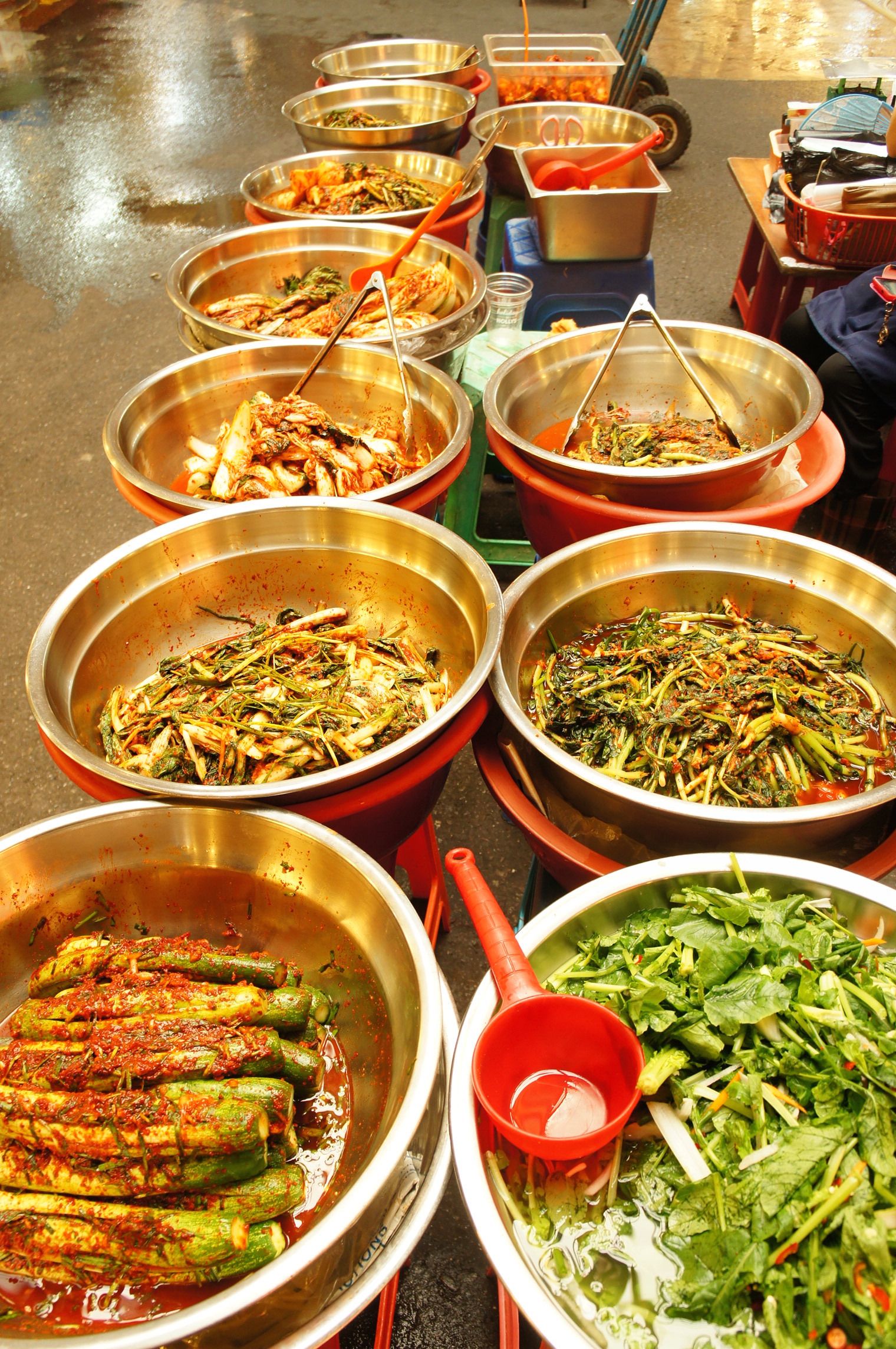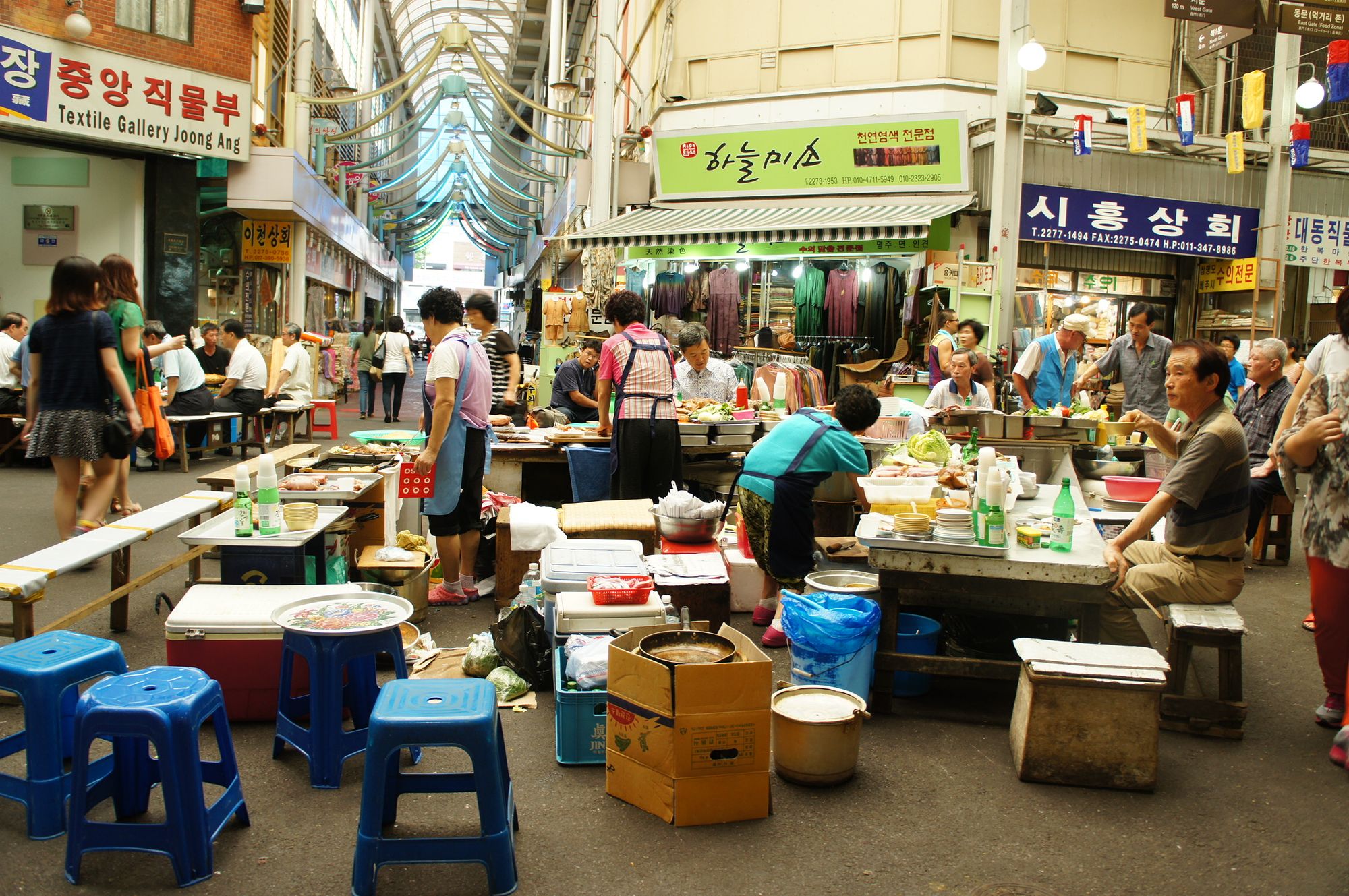First day of Summer College Session "Reflections of Food and Culture in Asia"

Originally posted on August 13th 2013.
Personal soft spot for culinary and culture
Yesterday was the first day of my two weeks of the summer session program on Reflections on Food and Culture in Asia which is a specialized program to explore traditional and modern (Southeast) Asian cuisine and culture through field trips and special lectures which are taking place in Seoul, South Korea and Fukuoka, Japan.
I know that some of my friends are going to say „Hey, that fits to you, since you like to eat so much.“ True, I am a foody. But there is more behind my motivation to participate at this program.
I think you will not disagree that it is a fact that historic developments have a cultural consequence on regional cuisines as for instance the Chinese cuisine has had many influences on the Asian cuisine. Also, the French colonial period for instance has influenced the Vietnamese cuisine in a special way. So these indications reveal that culinarian developments within a cultural circle are an excellent field of study regarding cultural interdependencies in general. To participate in this study program will provide me great insight into this research field. Besides my attraction to this subject I have always had a natural curiosity for getting to know new cultures. I guess this is in large part because my parents are originally from Vietnam while I was born in Germany. I therefore had the fortunate opportunity to grow up in two different cultures. But growing up in Germany however, Western culture lies closer to me.
So attending this study program will allow me to experience the Asian culture in a special and better way and better link the two cultures.
Regarding the global different cuisines, one of the most highly decorated chefs in the world, Paul Bocuse, once said that there are only three cuisines in the world: French, Chinese and Moroccan. I am asking myself if this really reflects the reality. Due to my own modesty I would not state that Bocuse is at fault, but I personally feel that Korean cuisine is excellent, as is Japanese cuisine, both of which have many unique facets. One of the most recognizable aspects is for instance the Kimchi which is such a special side dish that it is integrated in almost every Korean meal.
As Korea and Japan are a new (geographical) area to me I think in the setting of these two locations I will help me have an easier access to the tradition, culture and people.


Breakfast from the campus convieniet store, green campus area.
Korean cuisine and Obansaek
Yesterday’s first lecture was about the Korean Traditional Culture. One of the professor’s key sentences was that due to the trend of bilingual, globalization, traditions should not disappear. So what are one of the most recognizable patterns when we think about cultures?
It is food.
A good example is when you think of your favorite food. Is it maybe Bratkartoffel, Pho, or Bibimbap? And why is it like that? One fact is that actually our parents passed this feature to us. And their parents passed it to them. So this is one way of getting to know one’s own culture.
Respectively in the Korean culture one of the key characteristics is uri. It means ours and is the concept of thinking as a community. Historically the family is the basis of the life of Koreans which is rooted by the Confucianism. The main countries which are influenced by Confucianism are for instance Korea, Vietnam and China. Here the main significance of the family system have had been the patriarchal society, the system of inheritage and the family relationship. I will not go deeper into this topic as is has a lot of content. Furthermore this traditions have changed a lot since the Urbanization and as well the Western lifestyles have extended. But still the main patterns can be found in the Korean culture and the every day life.
The second lecture was about the Philosophy and Mindset of Traditional Korean Food. Korean food is a unique cuisine that grew from the country's culture, environment, geography and climate. Since Korea is a peninsula it has many different growing areas. The valleys provide rice, vegetables, fruits and beans. The mountains are perfect for growing mushroom, wild ferns and roots. And the ocean provides lots of fish, seafood, seaweed and sea salts.
The traditional composition of Korean food is rice bap, a soup guk, kimchi and a variety of smaller side dishes called banchan. Each of these the diners gets his/her own bowl of bap and guk, while everything else is shared.
It is known that Korean food is a healthy cuisine and has a colourful look. The philosophy of Korean Food is called obangsaek, five colours. Philosophical and spiritual aspects are influencing the Korean cuisine because in the ancient times the food had religious significance. such as People believe(d) that sharing the food offered to gods, spirits or ancestors will bring them blessings.
I want to introduceobangsaek real quick and concise as I liked this topic.
Cheong, blue or green color represents wood and the east direction. It symbolizes the youth, spring and trees. The ingredients that usually used are cucumber, green onion, water celery and wild sesame leaves (I like to eat these a lot). They are useful for the heart, energizing liver and intestines.
Jeok, red represents the south and symbolizes fire, summer, mannerism and exorcism. The ingredients are red beans, red rice, red pepper. They aid the blood circulation.
Hoek, black represents the north direction and symbolizes water and the wisdom. The ingredients are black beans, black rice, black sesame seeds, stone mushrooms, laver and seaweed. They tend to calm the mind and are also good for kidney and bladder.
Baek, white represents the west direction and symbolizes innocence, autumn and justice. The ingredients are garlic, onion, lotus root, radish and bean sprouts. This food is good for the impact of lungs and respiratory organs.
Finally, hwang, yellow represents the center and symbolizes virtue of faith which embodies all the virtues represented by blue, red, black and white. The ingredients are pumpkin, sweet potato, doenjang (red pepper paste) and soy sauce. The yellow ingredients in the oriental medicine relate to the functions of the pancreas, stomach and increase the appetite.
So putting those five color ingredients together is the unite of Yin (negative) and Yang’s (positive) principles. After that we had our Welcoming Luncheon.
The next lecture was a studio-typed one in Tasting & experiencing temple food. Although this was also a very interesting experience alasstill I have to skip the details since my post seems to never end.




Cooking traditional korean temple food.
In the afternoon we had a field trip to Dongdaemun Market one of the traditional Korean markets. I really liked it because it has similarities to those in Vietnam. Some of my impressions:





Dongdaemun market, different kimchis and food stands.
Seems that I need to find a way to share the experiences of today in a shorter format since there is too much to tell, I will catch up later.
Gamsahamnida.



